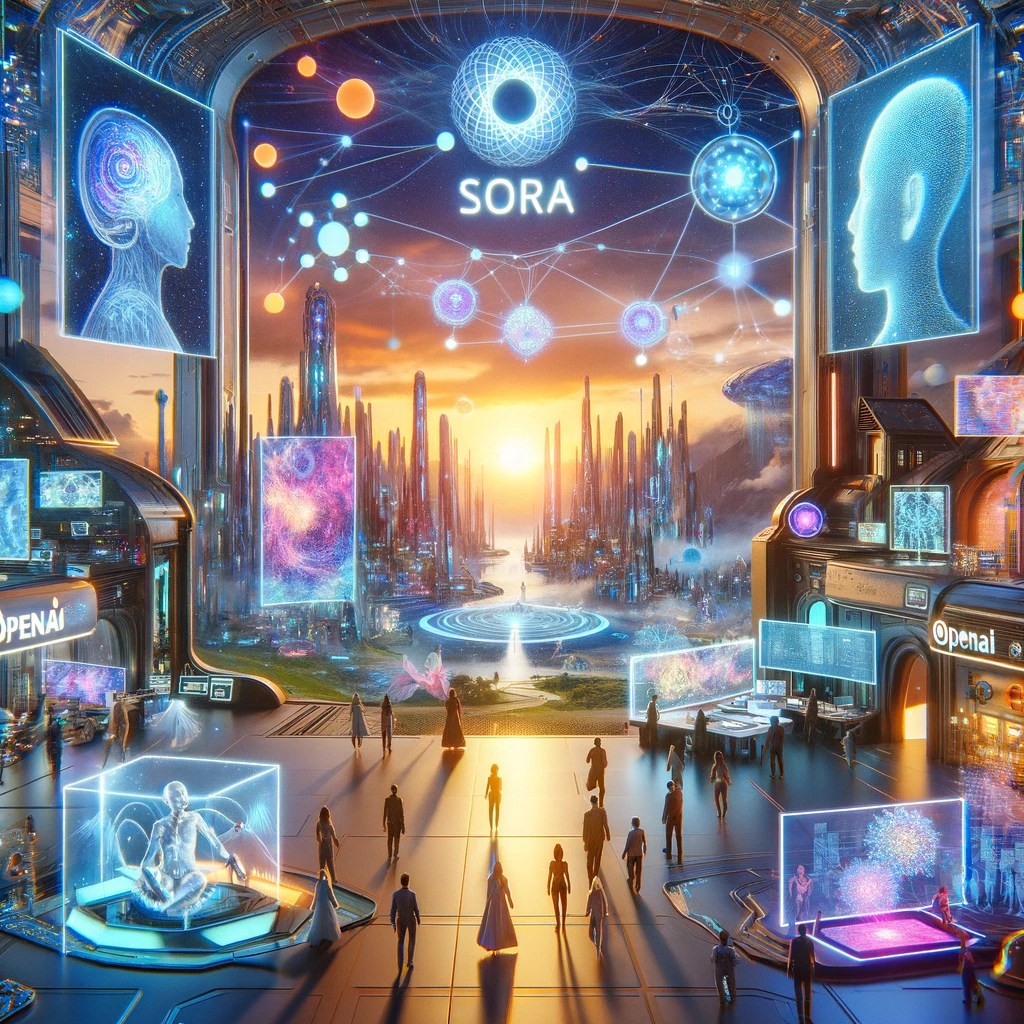OpenAI unveils Sora: revolution in video games with artificial intelligence’artificial intelligence

February 23, 2024
In recent years,artificial intelligence has made great strides in the field of video games.AI has been used to enhance the gaming experience, create increasingly realistic virtual characters, and develop immersive environments. But what if AI could generate entire video games on its own? This is the challenge OpenAI has faced with its new video generation model, called Sora.
The power of Sora
Sora is the first video generation model developed by OpenAI, and its capabilities are truly impressive. Initially, Sora’s main goal was to generate high-quality cinematic videos, but the developers have discovered that the model is capable of much more.
According to a technical paper published by the OpenAI researchers themselves, Sora can generate videos of arbitrary resolution and aspect ratio, up to 1080p. This means the model can perform a wide range of image and video editing tasks, such as creating looped video, extending video over time, or changing the background of an existing video.
But what makes Sora even more interesting is its ability to “simulate digital worlds.” In one experiment, OpenAI fed Sora with prompts containing the word “Minecraft,” and the model was able to generate a user interface and gameplay that closely resembled the popular video game. Sora is also able to control the player character and simulate the game’s physics.
Sora’s architecture
According to the technical paper published by OpenAI, Sora’s architecture is based on a data-driven physics engine. This means that the model does not just generate a single photo or video, but also determines the physics of every object in the virtual environment. The calculations made by Sora are then used to generate photos, videos or even interactive 3D worlds.
According to Jim Fan, a senior researcher at Nvidia, Sora is more of a data-driven physics engine than a creative tool. This feature of Sora opens up new possibilities for the development of high-performance simulators of physical and digital worlds, as well as the objects, animals and people that inhabit them.
Limitations of Sora
Despite its extraordinary capabilities, Sora also has some limitations. For example, in the domain of video games, the model cannot accurately approximate the physics of simple interactions such as breaking glass. Moreover, even with the interactions it can model, Sora can be inconsistent at times. For example, it might generate an image of a person eating a hamburger, but fail to render bite marks.
Because of these limitations, OpenAI has chosen to release Sora through a very limited access program. This allows developers to test the model in controlled environments and evaluate its performance more accurately.
The future of AI-generated video games
Despite its current limitations, Sora represents an important step forward in the field of AI-generated video games. The model could pave the way for procedurally generated games based solely on textual descriptions. This could lead to even more realistic, perhaps even photorealistic, gaming experiences.
However, it is also important to consider the broader implications of this technology. The generation of realistic video content from text could be used to create increasingly convincing deepfakes, with potential negative consequences for society. For this reason, OpenAI has chosen to restrict access to Sora at this time.








